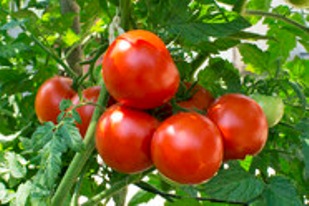MANHATTAN, Kan. – Many gardeners plant tomatoes, and while making salsa and spaghetti sauce or eating them whole during the summer months are popular choices, the fun can be extended well into the rest of the year.
Kansas State University food scientist Karen Blakeslee said tomatoes are also popular for freezing, canning or dehydrating to use later.
“Having basic options such as whole tomatoes, tomato juice or tomato sauce allows you to use tomatoes in many more recipes,” Blakeslee said.
Canning allows many more tomatoes to be stored, she said. Freezing tomatoes is limited by available space in the freezer.
From a food safety standpoint, Blakeslee said tomatoes require acidification, which means adding acid to increase the acid content during canning.
“The natural pH (acidity level) of tomatoes – no matter the variety or color – is at or above 4.6,” Blakeslee said. “Therefore, many tomato varieties are low acid foods. While they might taste acidic or have a sour taste, the actual pH measurement is the true indicator of acid content.”
What that often means for canning tomatoes is that bottled lemon juice, citric acid or vinegar must be added.
“Do not use fresh lemon juice because the acid content is inconsistent,” Blakeslee said. “(Adding acid) is a must for either water bath canning or pressure canning tomatoes. Recipes that use tomatoes as an ingredient – such as salsa – will also have lemon juice or vinegar to acidify the product. Do not alter the amounts of ingredients.”
Blakeslee said a K-State Research and Extension publication – Preserve it Fresh, Preserve It Safe: Tomatoes – includes a handy chart to aid in adding the correct amount of acid to canned tomatoes. The publication is available online for free from the K-State Research and Extension bookstore.
“While it may still be summer, keep in mind that as the fall season and colder temperatures approach, do not can tomatoes that have been subjected to a frost or freeze,” Blakeslee said. “This causes the acid content in the tomatoes on the vine to change too much, which makes them unsafe to can using recommended practices. The quality of the tomatoes also will be reduced.”
In addition to tomatoes, Blakeslee said many other foods can be canned. She shares the following food safety tips:
Take time to learn the proper steps to home canning.
Read recipes before starting the canning process to be sure all ingredients and supplies are available.
Make sure equipment is in good working order. Replace parts, if needed.
Do not use a jar size larger than what is stated in the recipe.
Give yourself plenty of time for the canning process. Rushing any steps can lead to mistakes and possibly spoiled food.
Blakeslee, who also is coordinator of K-State’s Rapid Response Center for Food Safety, suggests a website — Preserve it Fresh, Preserve it Safe — for guidelines on safe canning at home. She said the U.S. Department of Agriculture also has an online resource, called the USDA Complete Guide to Home Canning.
Blakeslee publishes a monthly newsletter called You Asked It! that provides numerous tips on being safe and healthy. The August issue contains numerous articles with tips for canning foods safely.
More information is also available from local extension offices in Kansas.


Dining and Cooking